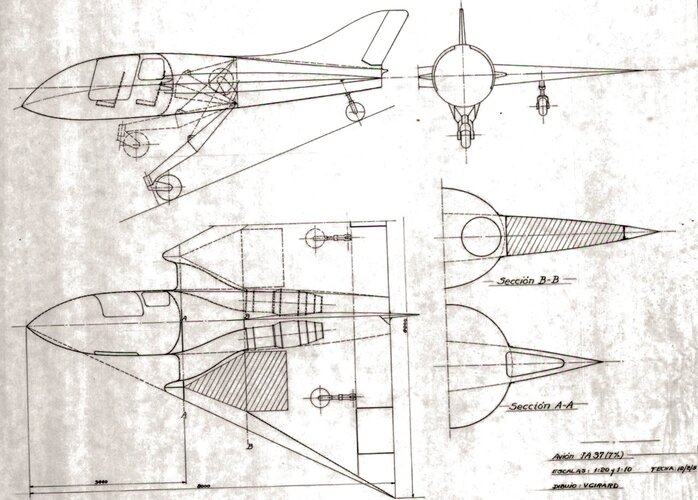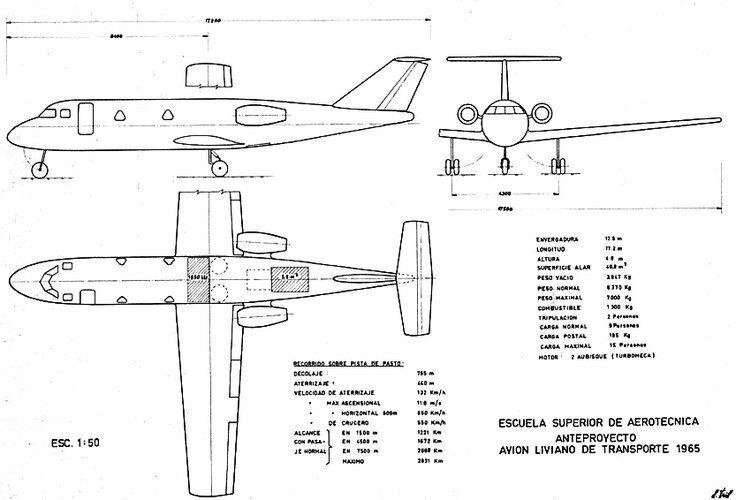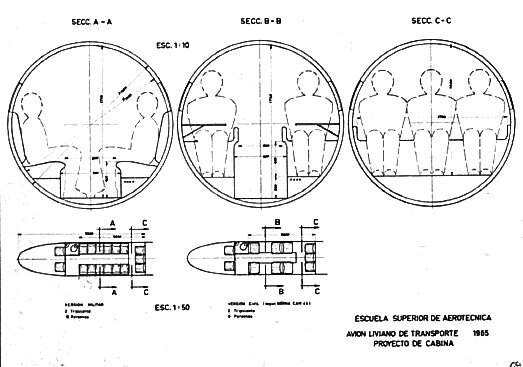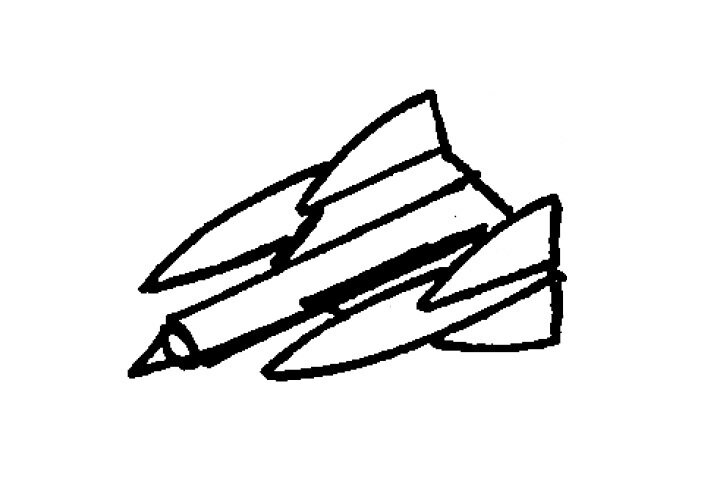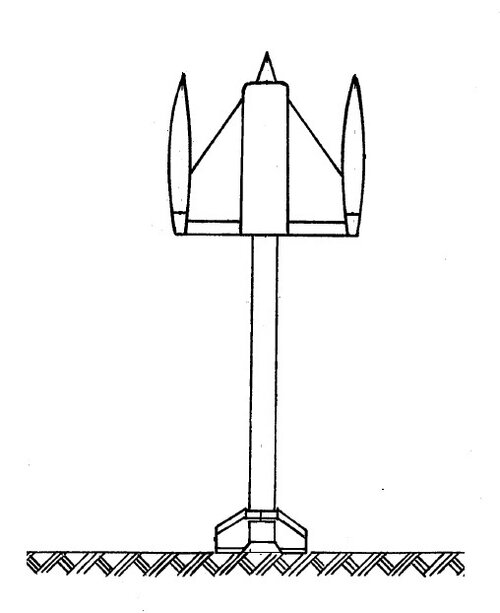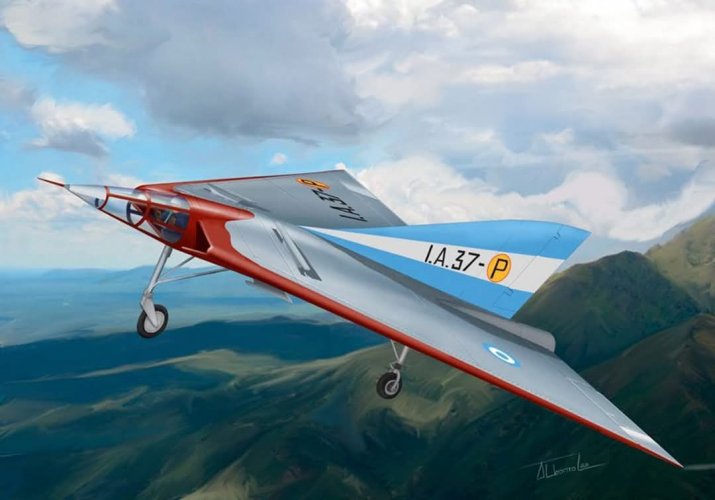You are using an out of date browser. It may not display this or other websites correctly.
You should upgrade or use an alternative browser.
You should upgrade or use an alternative browser.
Post-war Horten designs
- Thread starter Clioman
- Start date
Erdosain
ACCESS: Secret
- Joined
- 10 March 2020
- Messages
- 477
- Reaction score
- 1,973
Erdosain
ACCESS: Secret
- Joined
- 10 March 2020
- Messages
- 477
- Reaction score
- 1,973
THE PRELIMINARY PROJECT OF THE SUPERSONIC TARGET AIRCRAFT BY DR REIMAR HORTEN
In September 1970, Dr Reimar Horten - leading a group of doctors and engineers from the IIAE (Institute of Aerospace Research) - presented to the Argentine Air Force (FAA) a file with a project for a supersonic target aircraft, affordable and feasible in the country with the materials and facilities already available.
One of the alternatives offered by the West at that time was the conversion of planes that had gone out of service into radio-controlled aerial targets, as England did with the Gloster Meteor at an approximate unit cost of 50,000 pounds sterling, something prohibitive for country's budget.
The USA had developed radio-controlled aerial targets, but due to their command systems and recovery systems, their acquisition cost was beyond the possibilities of the FAA.
CHARACTERISTICS AND PERFORMANCE OF THE SUPERSONIC AIR TARGET
The target aircraft proposed by Horten would be capable of reaching speeds of up to 1,800 km/h (Mach 1.5) at a flight altitude of 5,000 metres and 200 km/h at sea level, with an expected flight time of 30 minutes. From 5,000 metres high, the target aircraft would describe a 300-kilometre circle, descending in a spiral and gliding for 15 minutes until reaching a circle of 2 kilometres at sea level to facilitate its recovery, for which it was not planned to use a parachute but to land the target directly on the ground.
The power plant consisted of a central ramjet that used butane for combustion. To lighten the target and eliminate the need for injection pumps, the butane was stored in liquid form in pressurized fuel tanks and injected in gaseous form into the combustion chamber.
For its controllability in flight, the target would only be equipped with differential ailerons for roll and pitch control and for yaw it would only have two fixed fins. To reduce costs, the command system would be programmable on the ground, with no possibility, at least initially, of controlling the target by radio waves from the ground or another aircraft.
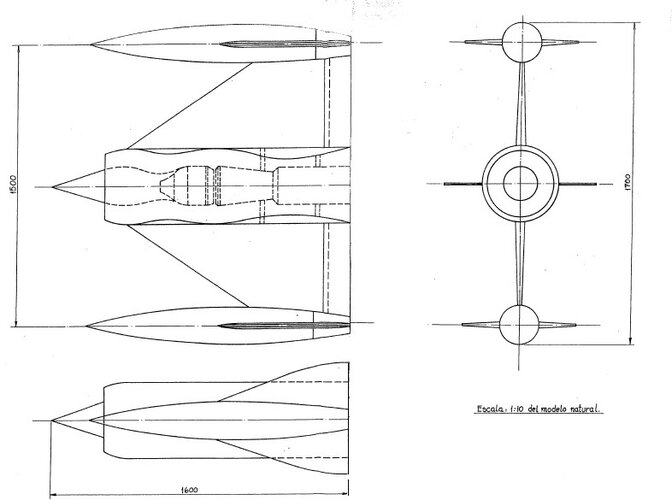
Three-view drawing of the supersonic target aircraft proposed by Dr. Reimar Horten
SUPERSONIC TARGET LAUNCH SYSTEMS
The target could be launched from an aircraft flying at 7,000 meters high or by means of an Orion II type rocket such as those developed by the IIAE.
The document exemplifies that the aerial launch vector could be the X2 aircraft, without giving any additional data on this apart from the side view of the aircraft in the flight profile graph for aerial launch.
In this case, the target would be taken to an altitude of 7,000 meters and launched at a speed of 360 km/h (100 m/sec). Upon reaching 5,000 meters at a speed of Mach 1.1 (350 m/sec), the ramjet would be ignited, reaching its maximum speed of Mach 1.5 (510 m/sec) after 3 to 4 minutes.
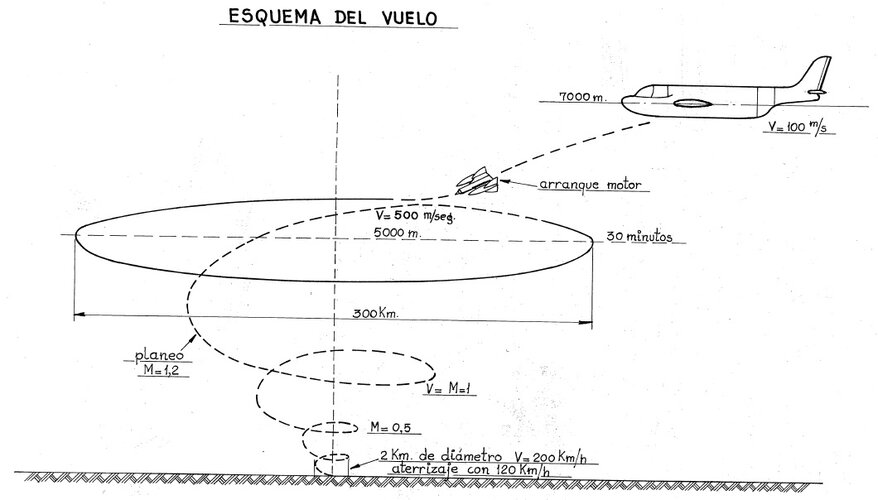
Flight profile by air launch
For the ground launch, the Orion II rocket was planned to be used. The launch was carried out vertically with the target's ailerons set at a certain angle to give the rocket a rotation and prevent deviation from the vertical trajectory. The Orion II rocket had a launch weight of 116 kilograms, reached a final speed of Mach 2 (650 m/sec) and a height of 3,900 meters after 12 seconds of thrust.
Once the design stage was completed, it was planned to build a 1:1 model for testing in the main subsonic tunnel and a 1:10 scale model to be tested in the supersonic wind tunnel chamber. But the FAA showed no interest in the project and it did not go beyond this proposal stage.
The next attempt to develop an aerial target would come from the IA-X-59, which flew as a prototype powered by an internal combustion engine, but for which variants powered by small turbojets had been planned.
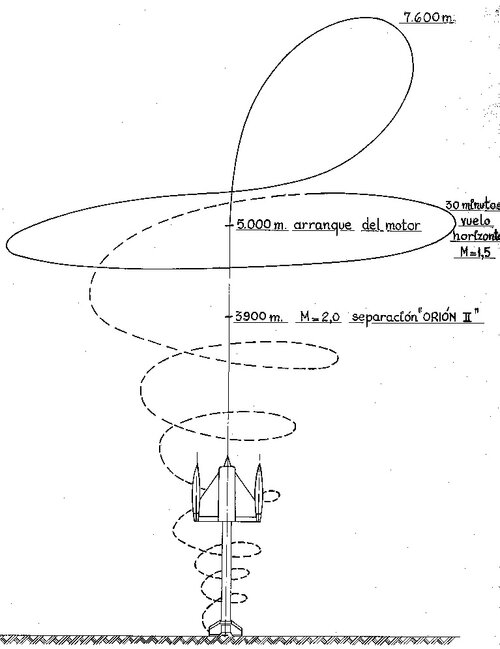
Flight profile by ground launch
TECHNICAL CHARACTERISTICS OF THE HORTEN SUPERSONIC AIR TARGET PLANE
Wingspan: 1.70 m.
Length: 1.60 m.
Fuselage diameter: 0.40 m.
Fuel tank diameter: 0.20 m.
Root chord: 1.20 m.
Tip chord: 0.55 m.
Wing area: 1.50 m2.
fins surface: 2 x 0.20 m2.
Glider weight: 80 Kg.
Equipment weight: 30 Kg.
Empty weight: 110 Kg.
Takeoff weight: 150 Kg
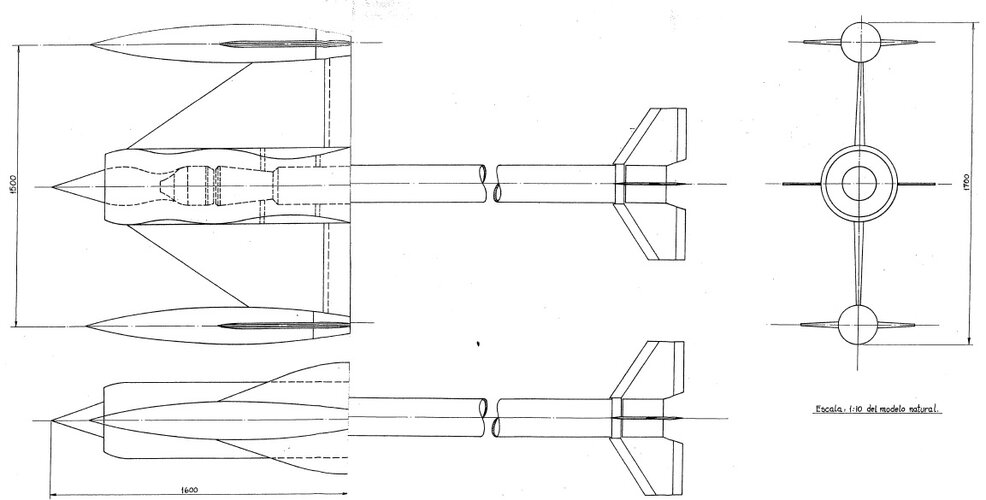
The supersonic aerial target and the Orion II ground-launched rocket
Sources:
File 315 "Preliminary project for a Supersonic White Aircraft"
Blancos Aéreos, RPV, Drones, UAVs, UASs, VANTs y UCAVs Argentinos
Arrancamos con uno de los mas antiguos que conozco, hay uno previo proyectado por Horten y posteriores de Quimar: FMA I.A. X 59 "Tábano" El IA-X-59 fue un temprano intento de desarrollar un RPV, o drone, por parte de la FMA a pedido de la FAA. Se construyó solo un prototipo propulsado a...
www.zona-militar.com
Last edited:
Similar threads
-
Douglas D-741 / A4D-4 Skyhawk
- Started by overscan (PaulMM)
- Replies: 25
-
-
Grumman Design 118 (not the XF12F!)
- Started by overscan (PaulMM)
- Replies: 34
-
-

